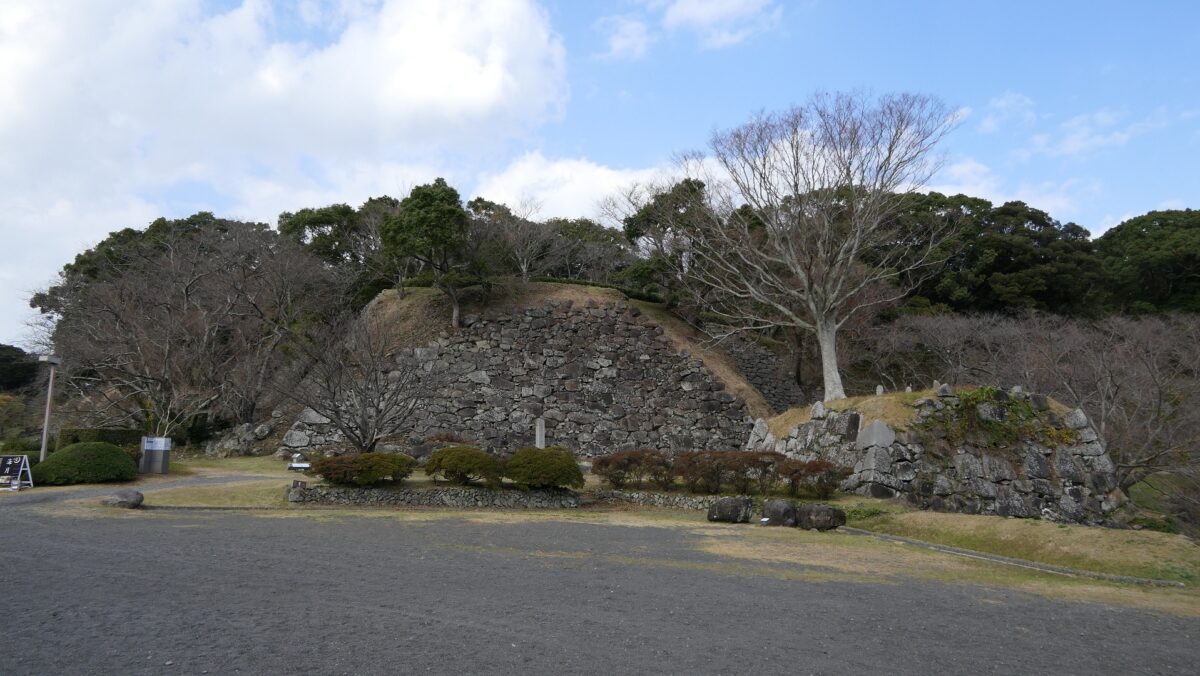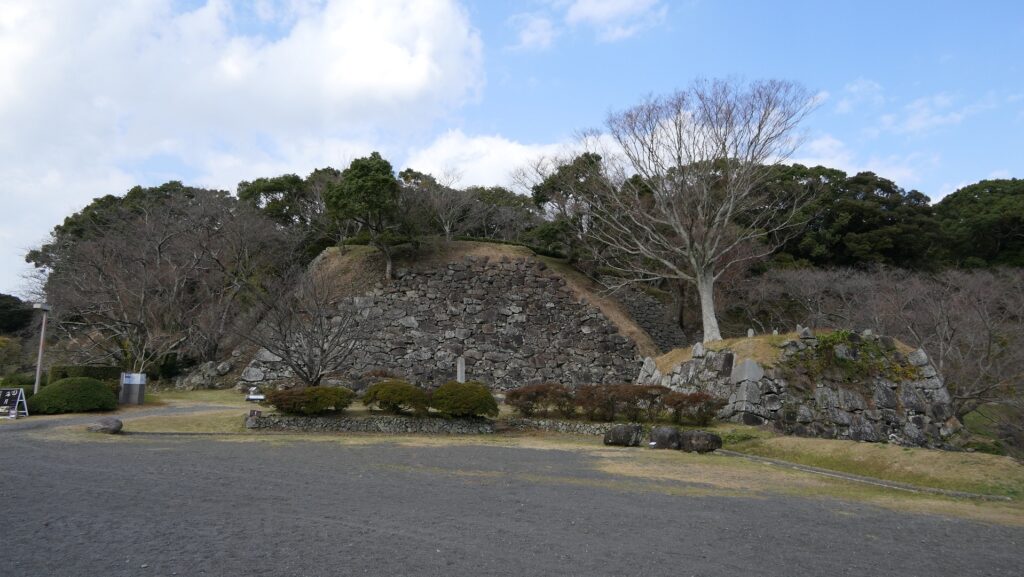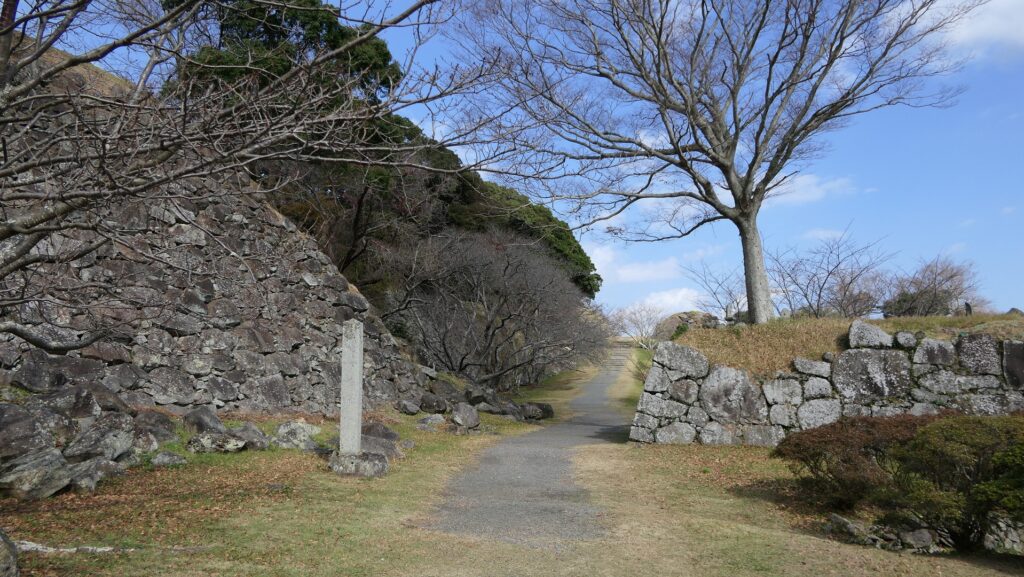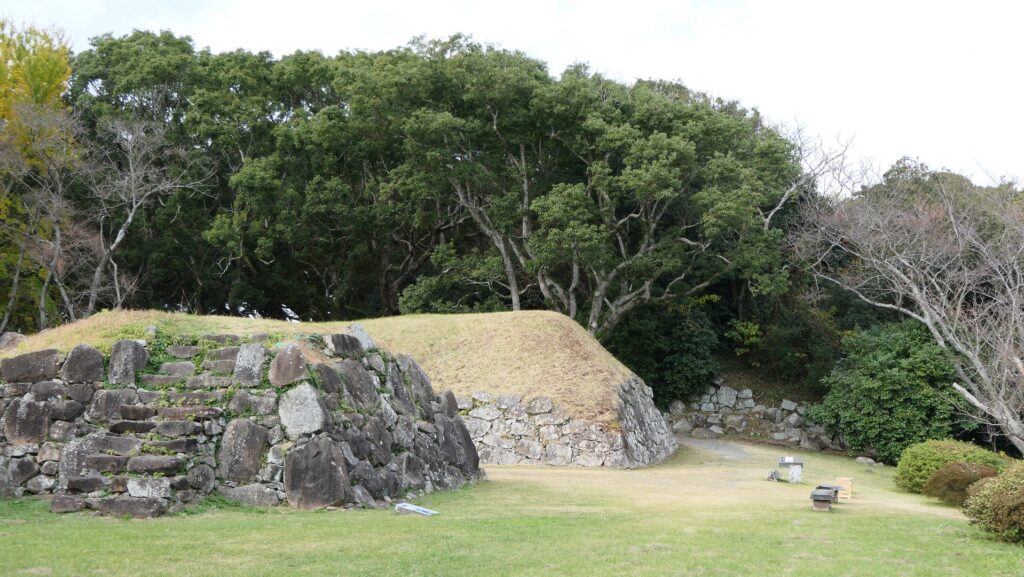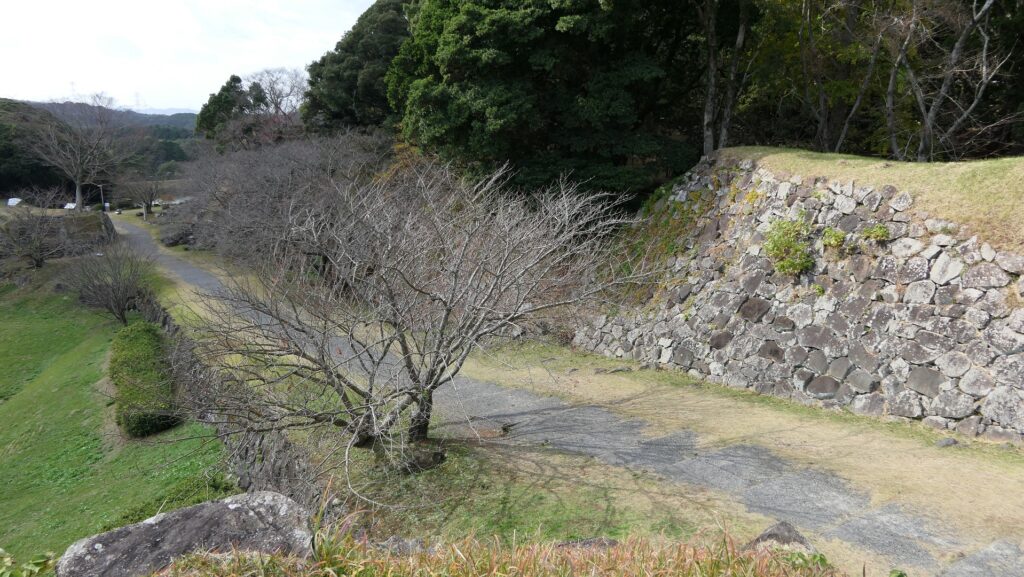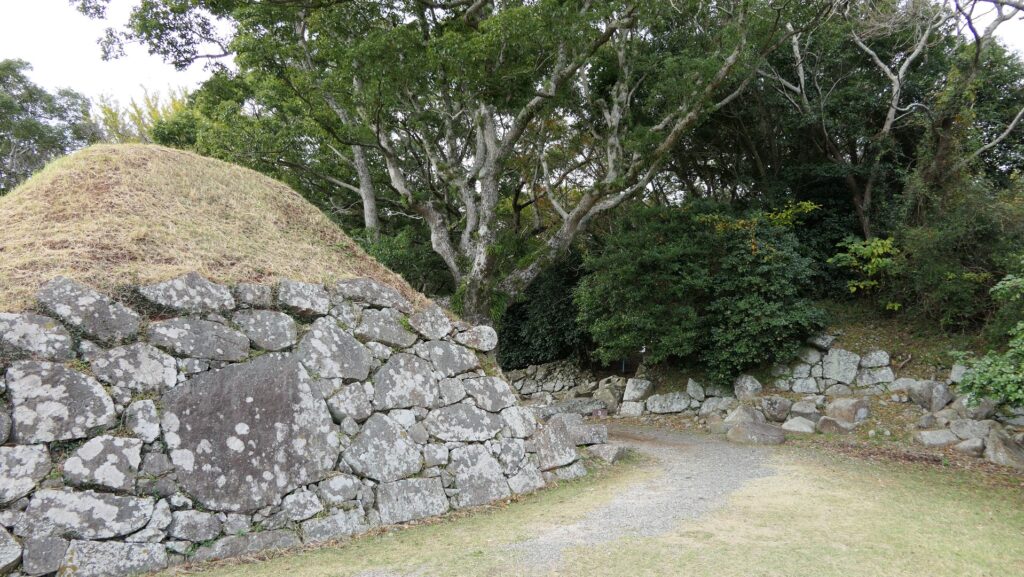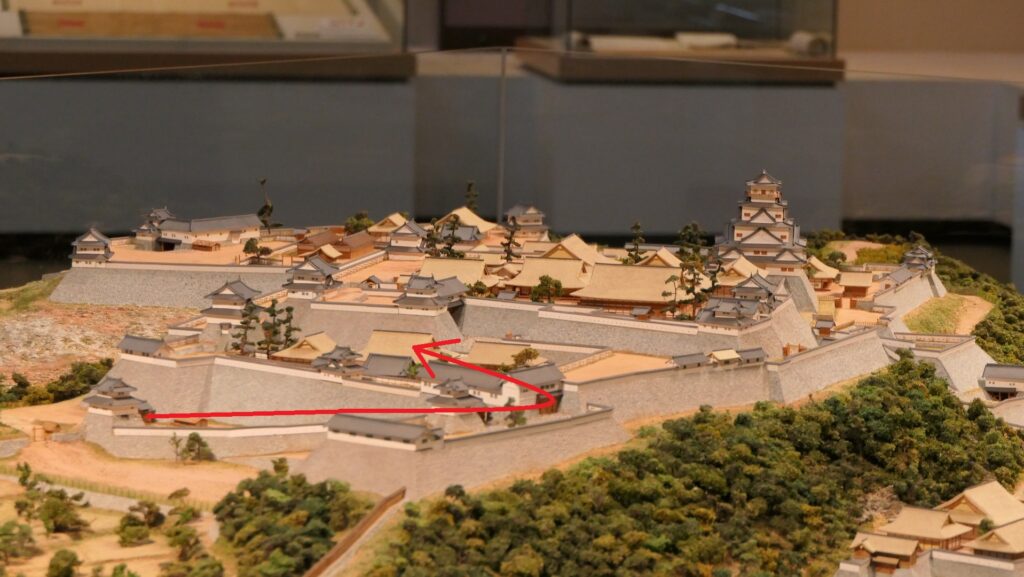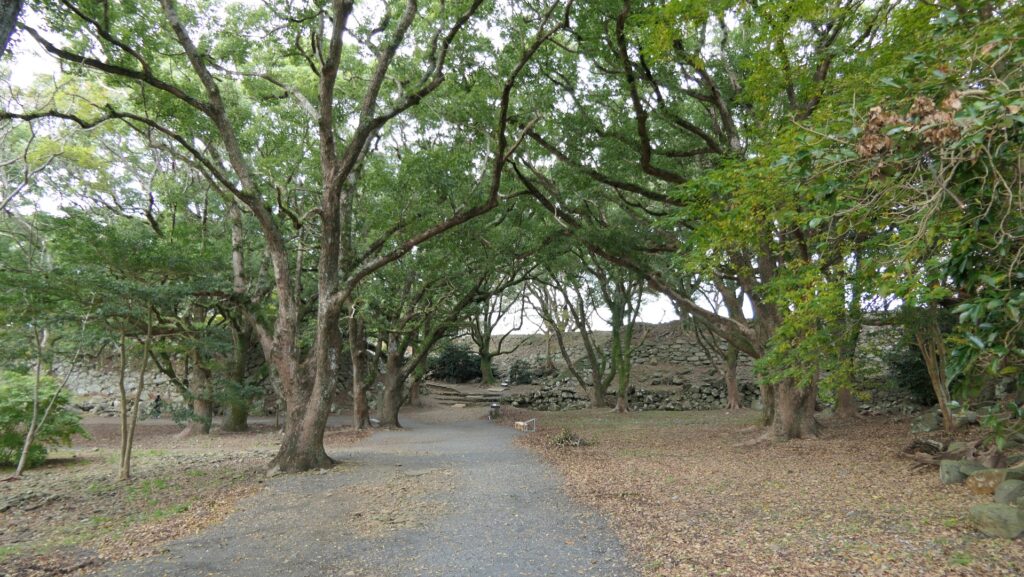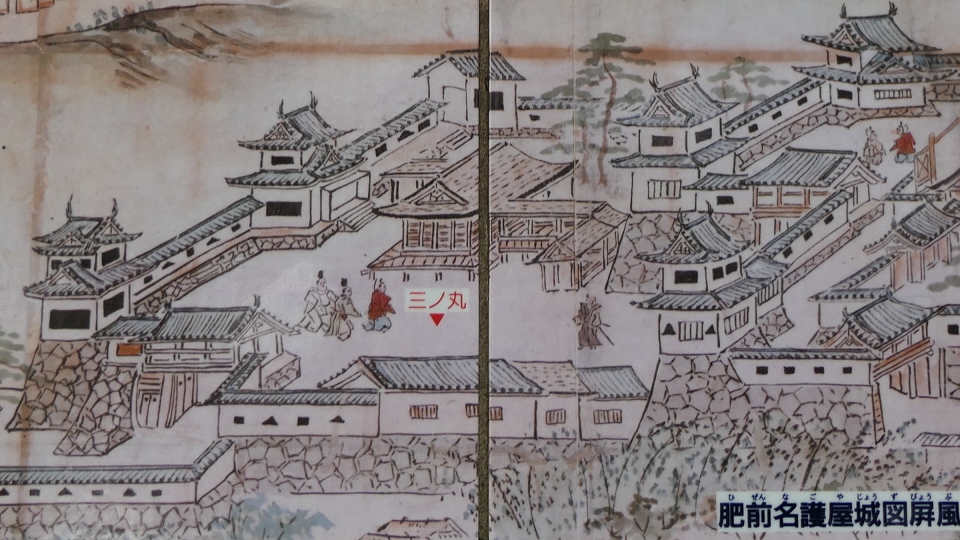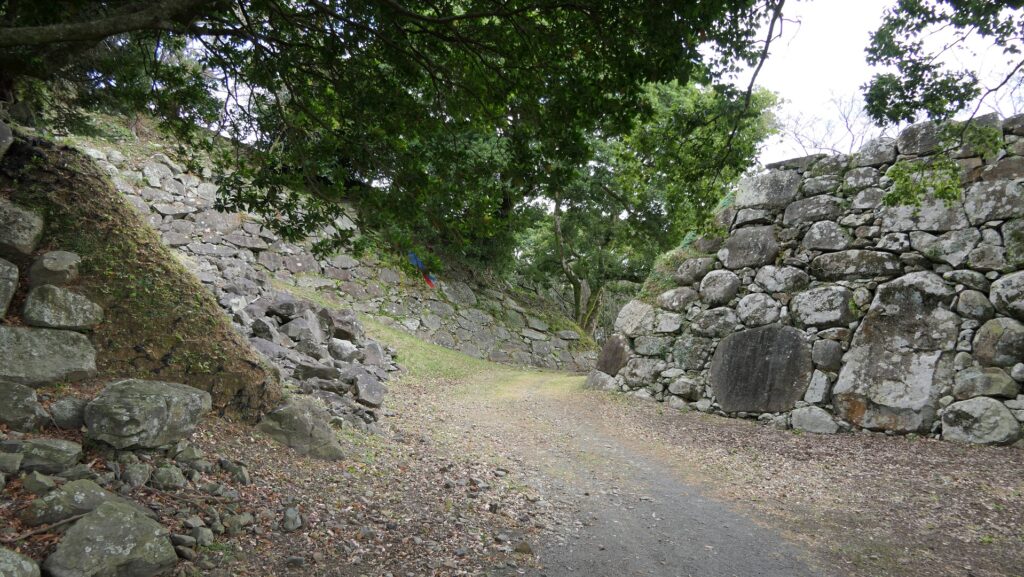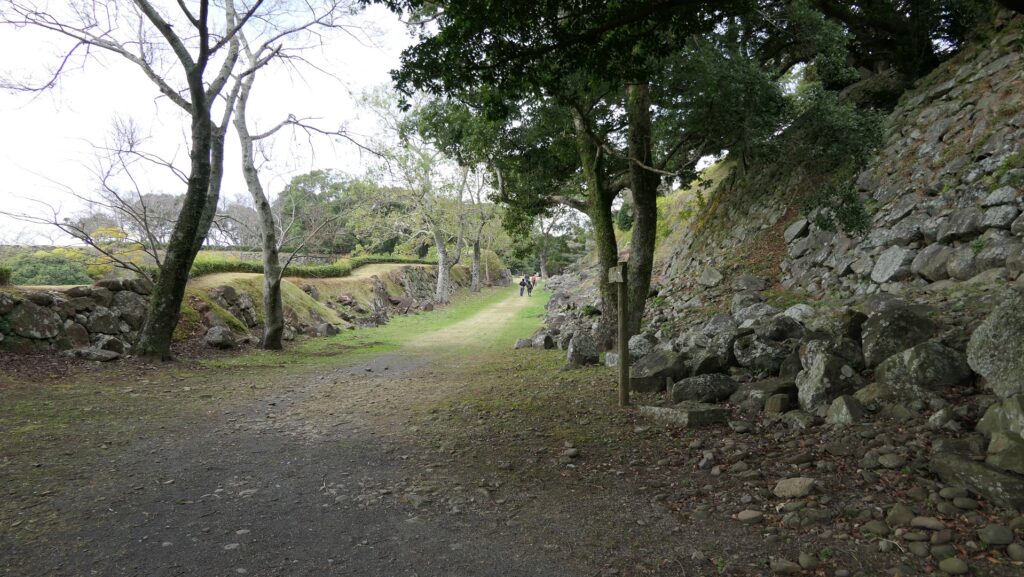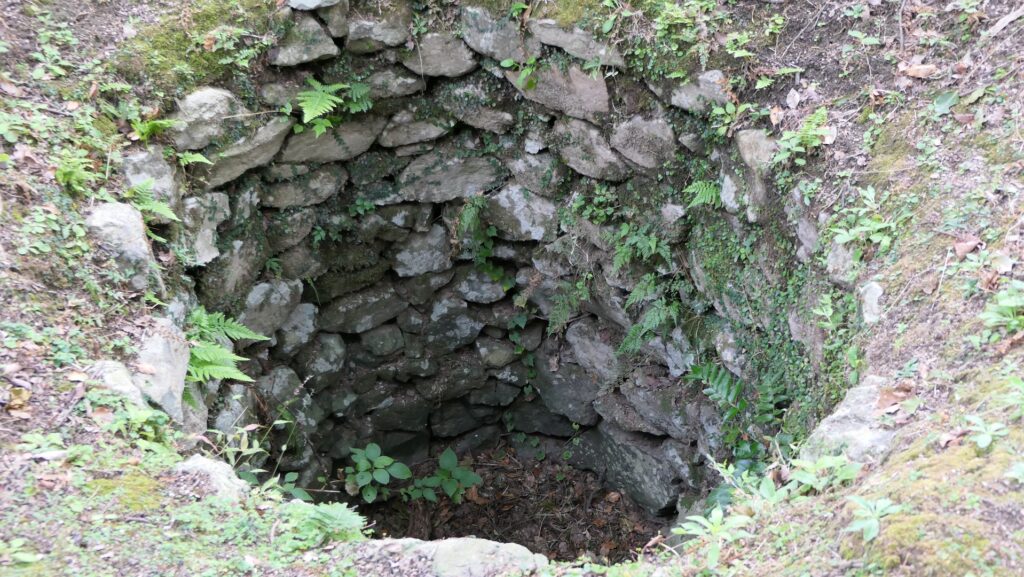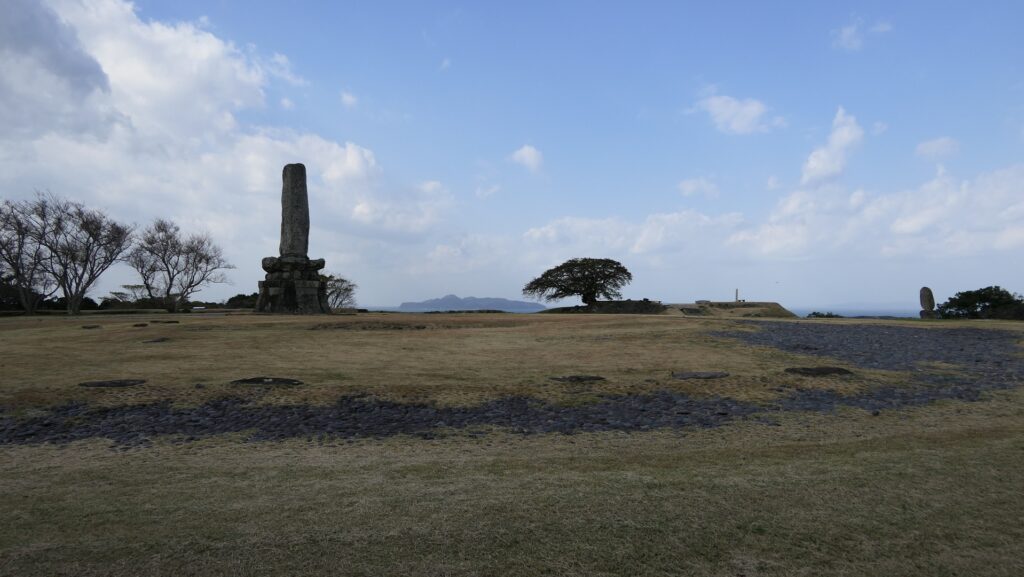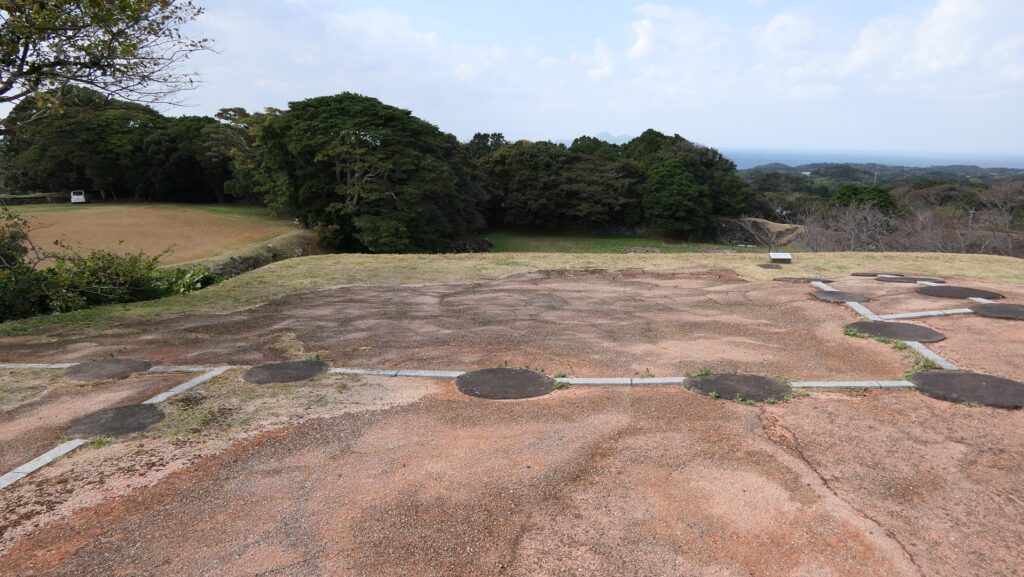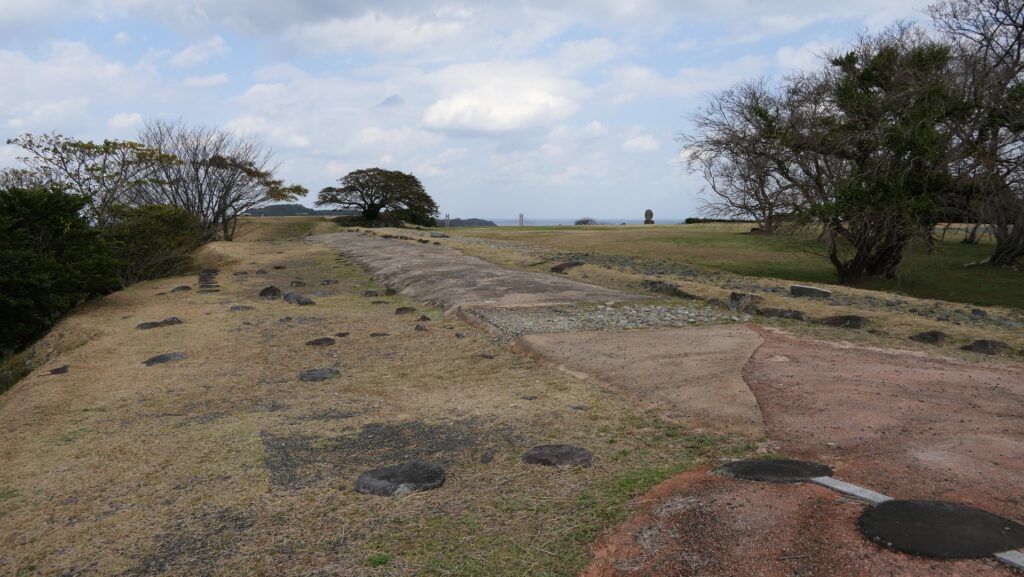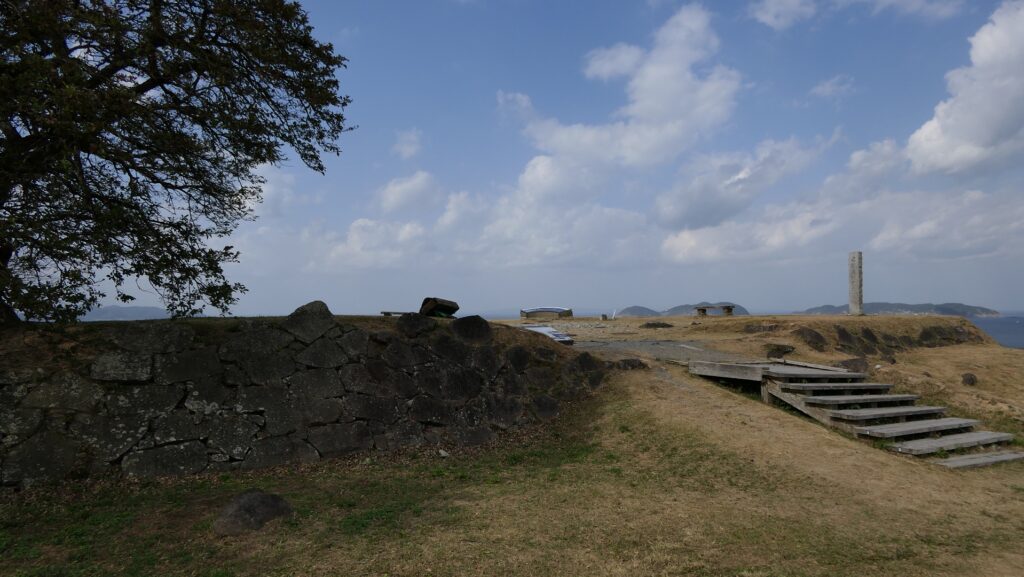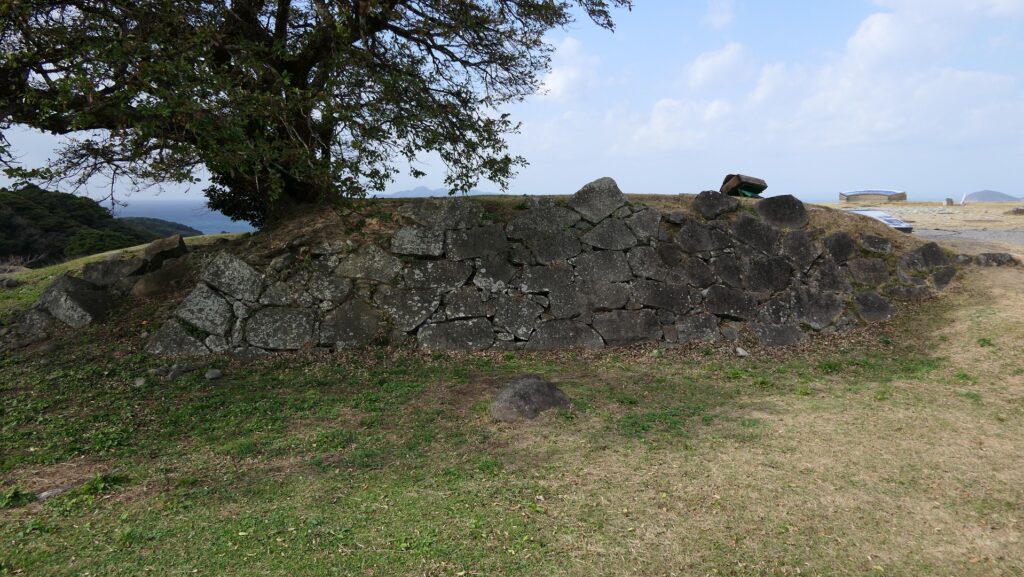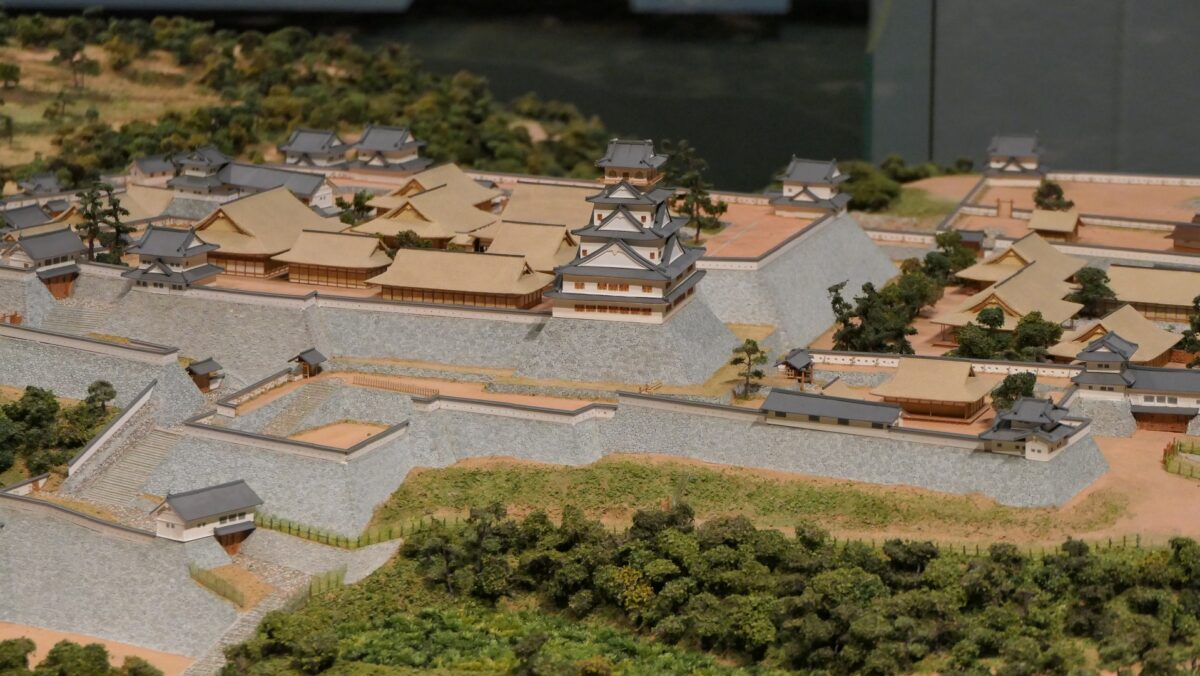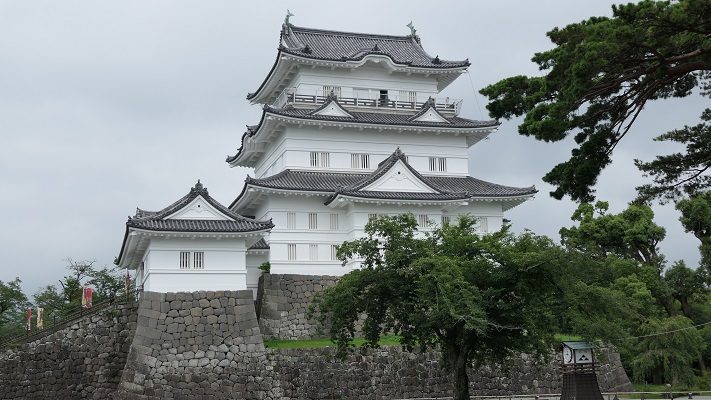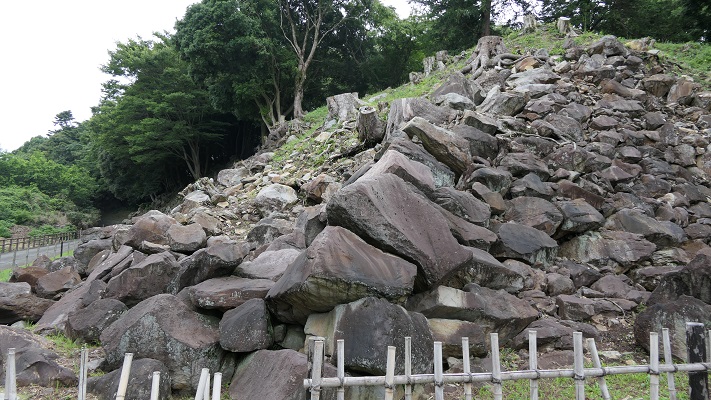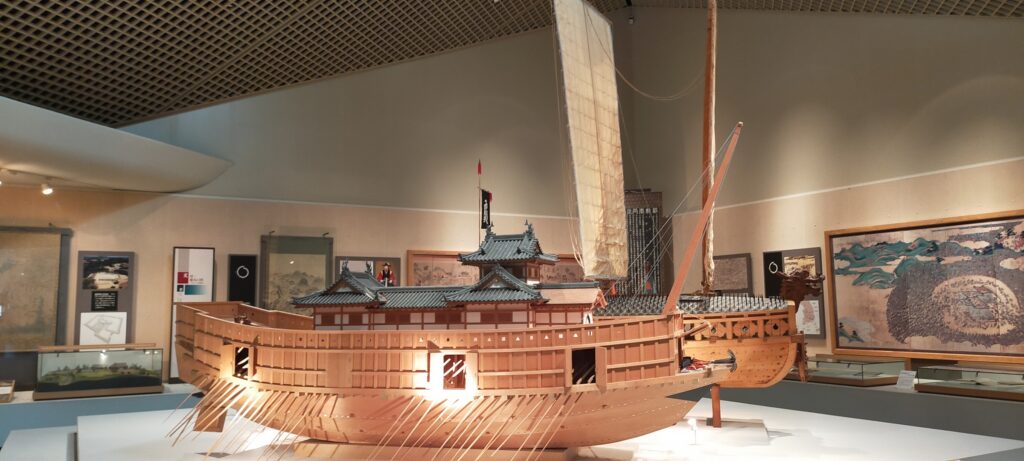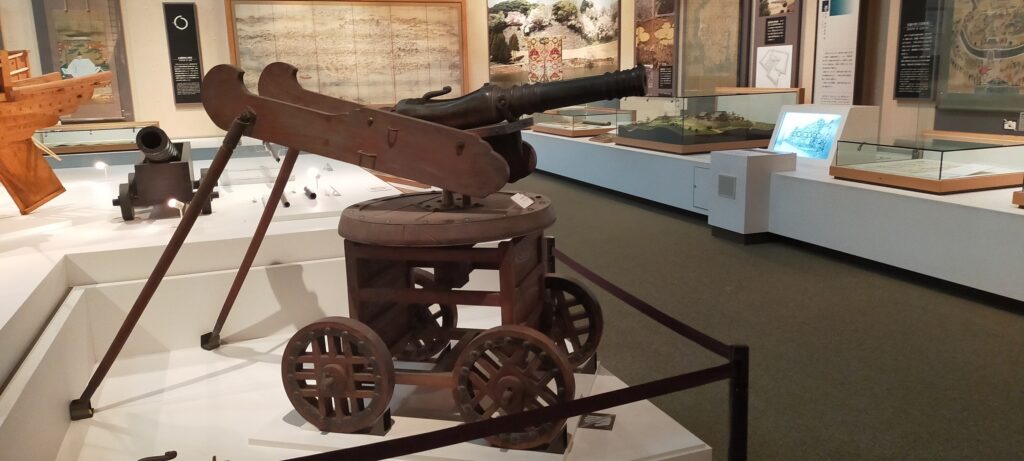Features
Let’s walk around “Back side of Castle”
You can also look down and admire the Yugeki-maru Enclosure and the Second Enclosure to the west from the Main Enclosure. The former one was used as the accommodation for the envoys from the Ming Dynasty. Its name “Yugeki” comes from the position of one of the envoys. The latter has the ruins of many stone steps called Aisaka, which were used by the soldiers to quickly climb up or down the stone walls.
The map around the Second Enclosure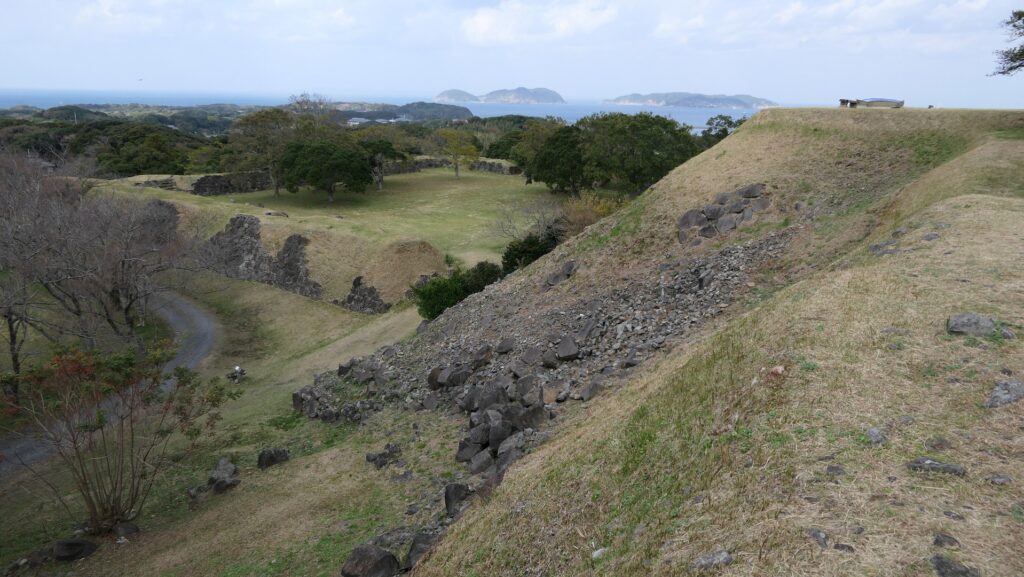
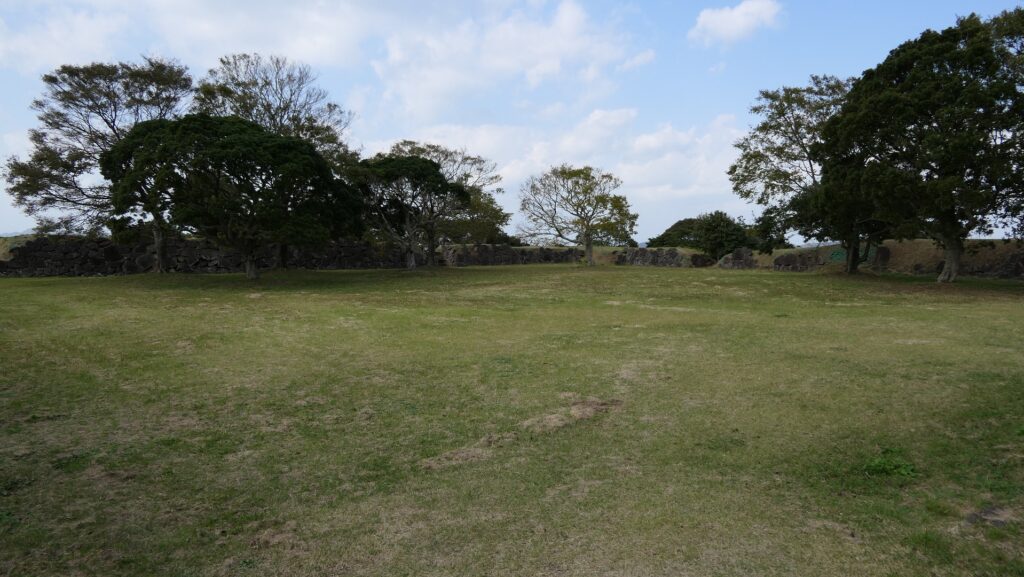


If you want to go there from the Main Enclosure, you need to go out from the Back Gate ruins and walk around passing through the Mizute Route and the Funate Route.

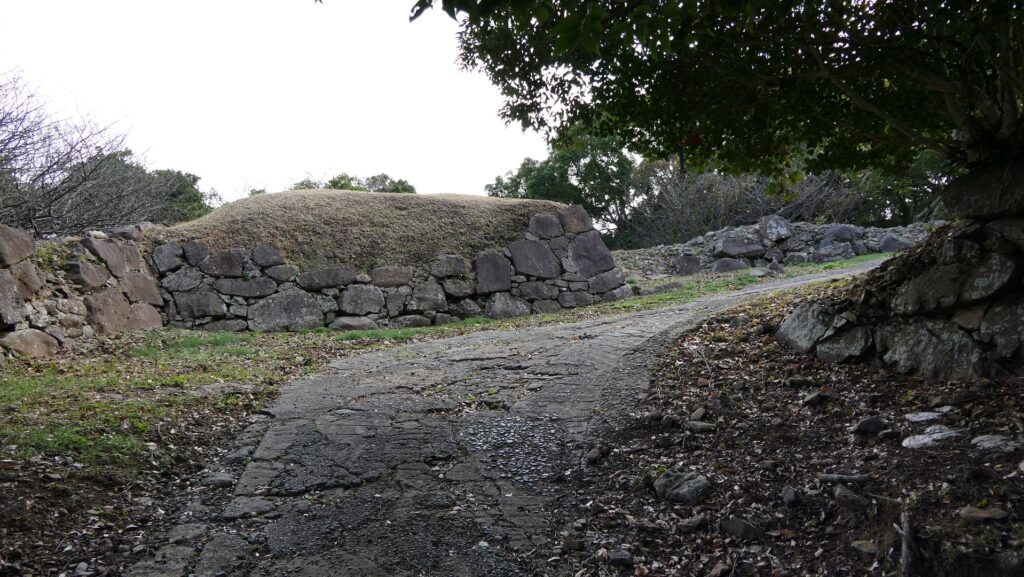
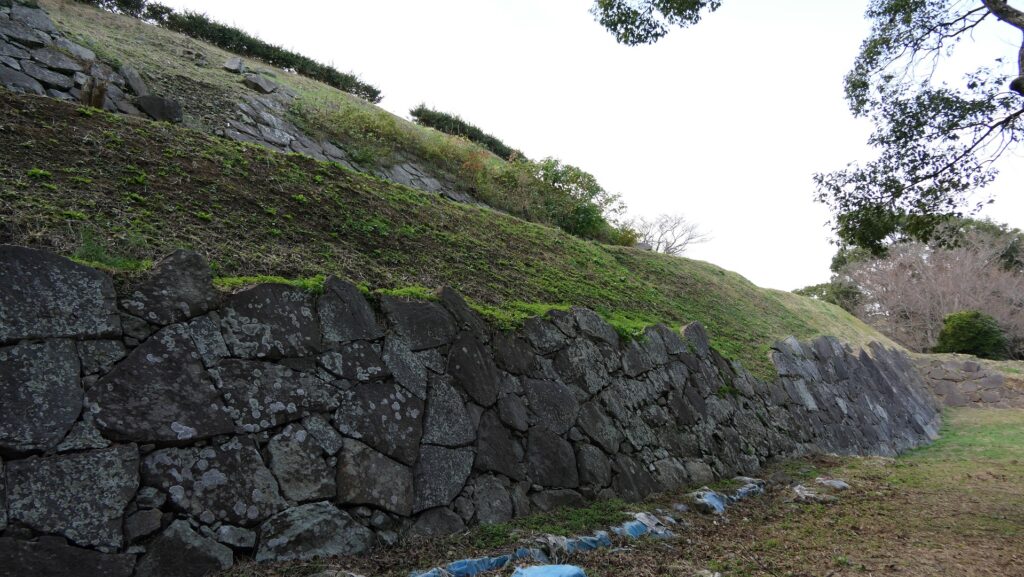
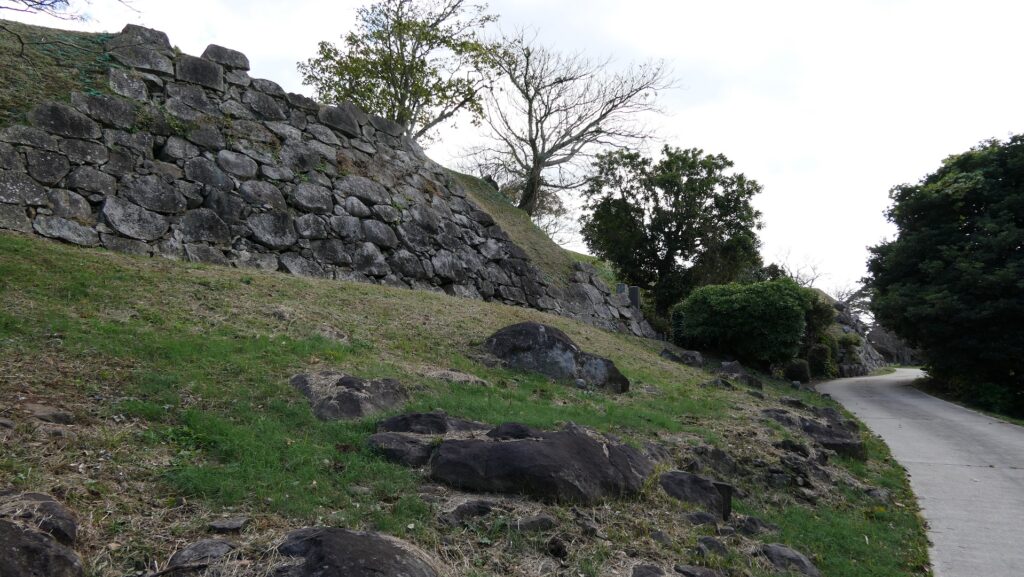
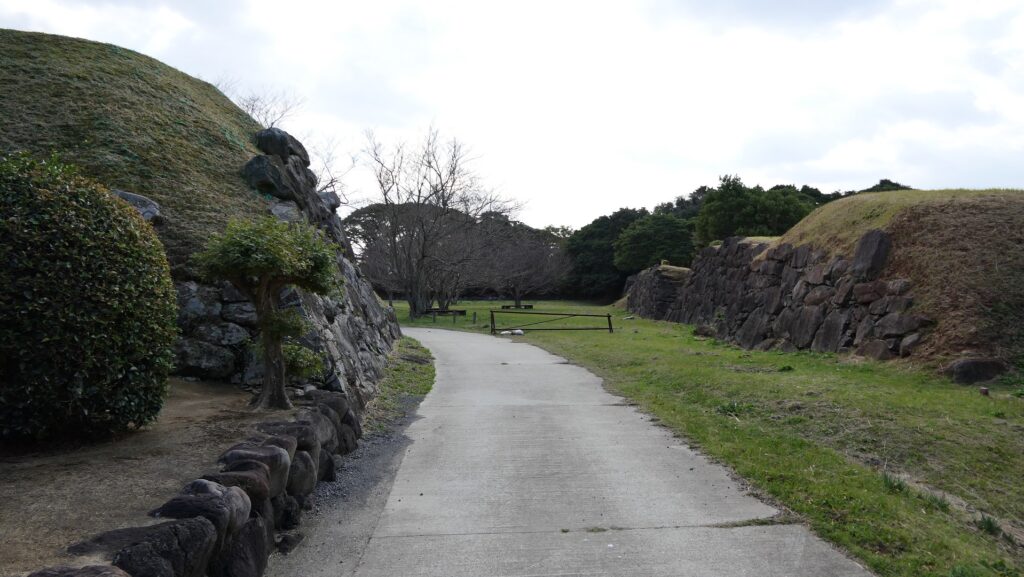
If you look up the stone walls of the Main Enclosure from these enclosures, you can see the stone walls were destroyed like a V letter very well. This is because the officials restored them just after they were destroyed intentionally.


Later History
After Hizen-Nagoya Castle was abandoned, all the buildings were demolished. It is said that part of them was used for the construction of Karatsu Castle. Many parts of the stone walls were destroyed intentionally as mentioned above. Historians speculate the destruction occurred for the following reasons:
It may have been due to the Law of One Castle per Province by the Tokugawa Shogunate; the Shogunate might have broken the stone walls so they could not to be used by rebels against the Shogunate (like Shimabara Rebellion); or it might have been done to show a good partnership to the Korean envoys.
The ruins have been designated as a National Special Historic Site since 1955.
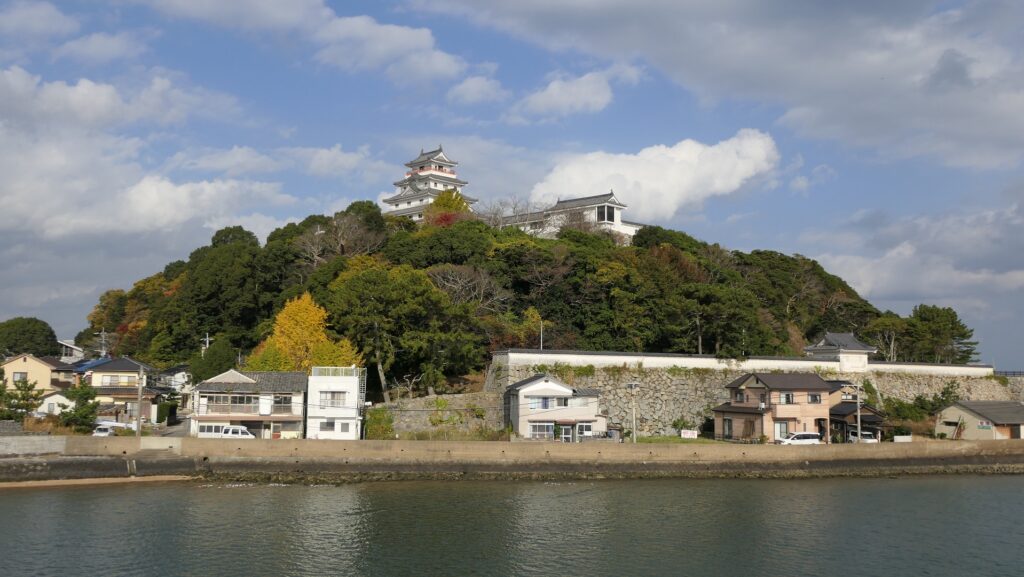
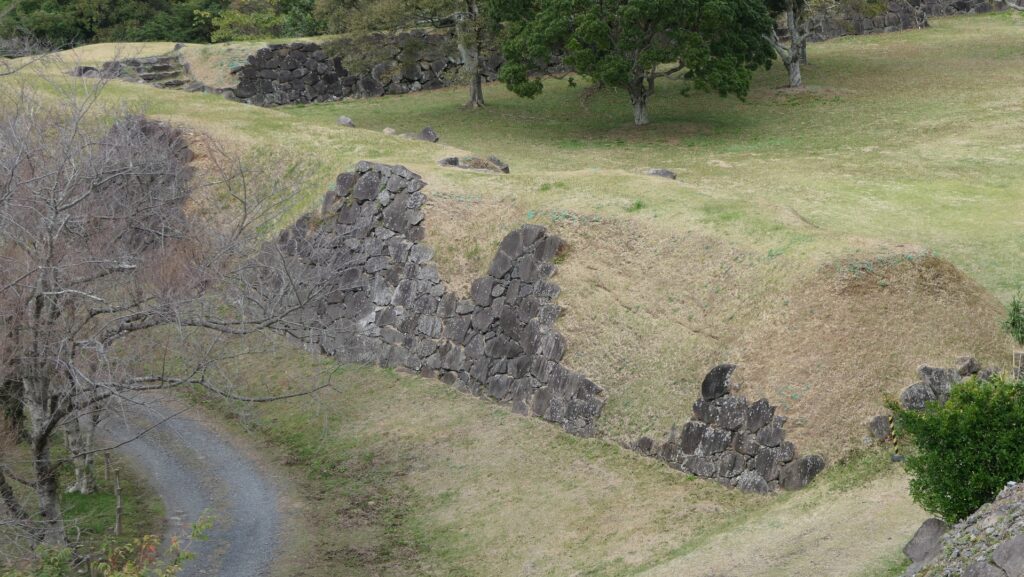
My Impression
Many Japanese people now tend to avoid thinking of the invasion of Korea by Hideyoshi Toyotomi. They also think the war was caused by Hideyoshi’s own crazy idea, considering the current relationship with Korea. However, I think many Japanese people wanted to get more territory at that time. Even Hideyoshi was not able to build such a huge-scale castle without the people’s cooperation. I also think we cannot build a real friendship with foreign countries without sharing real history.
If you have time, I recommend visiting some of the ruins of other lords’ military positions around the castle. I regret I was only able to go to one of them after visiting Hizen-Natgoya Castle.
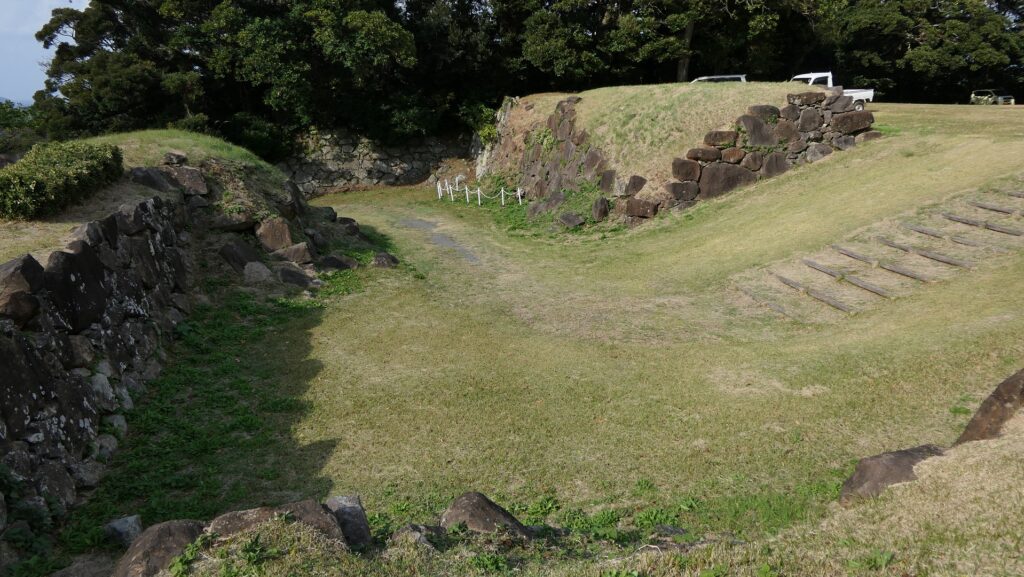
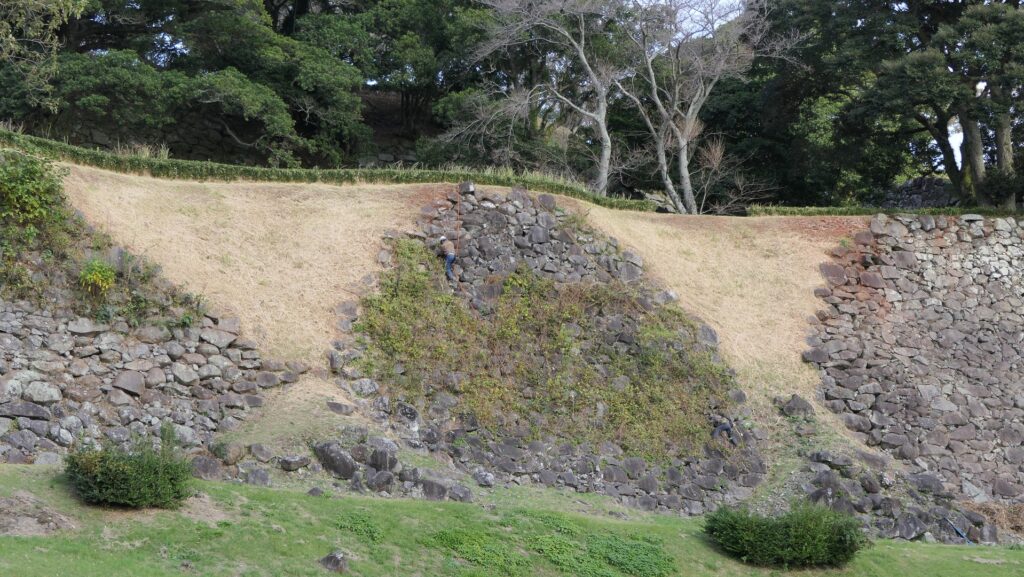
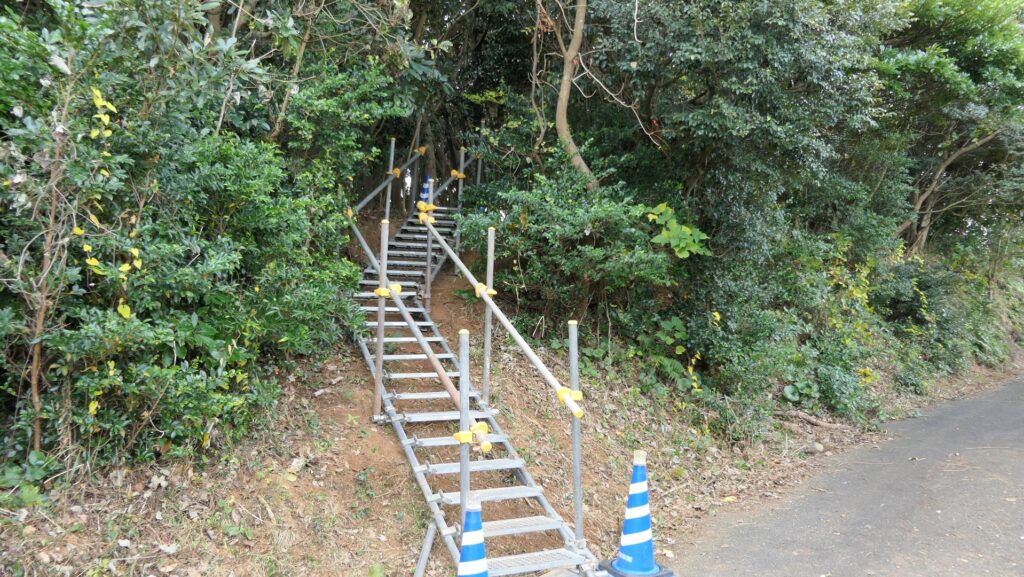
How to get There
I recommend using a car when you visit the ruins.
It is about 30 minutes away from Karatsu IC on the Nishi-Kyushu Expressway.
You can park at the parking lot of Saga Prefectural Nagoya Castle Museum.
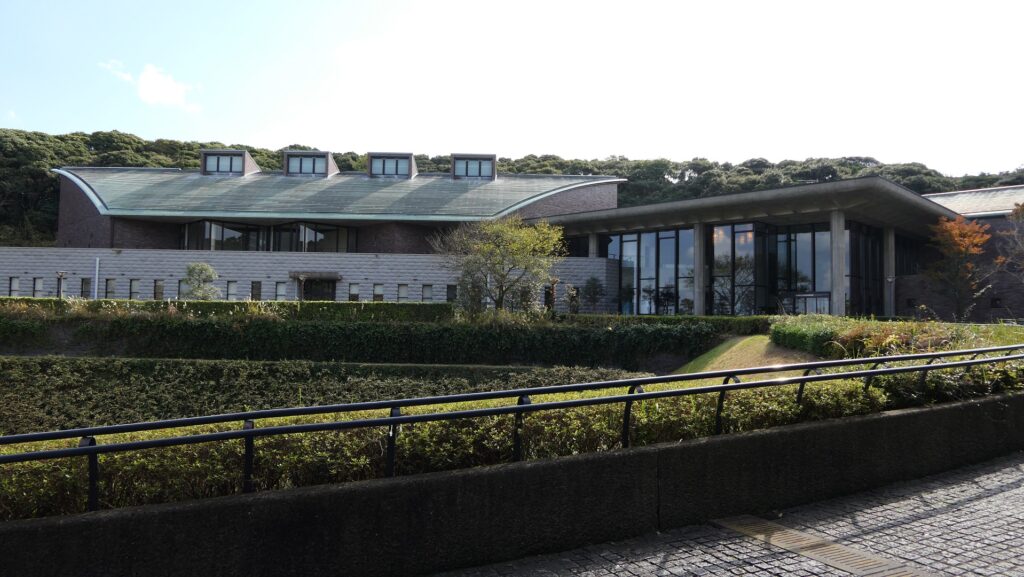

Links and References
・Saga Prefectural Nagoya Castle Museum
That’s all. Thank you.
Back to “Hizen-Nagoya Castle Part1”
Back to “Hizen-Nagoya Castle Part2”


